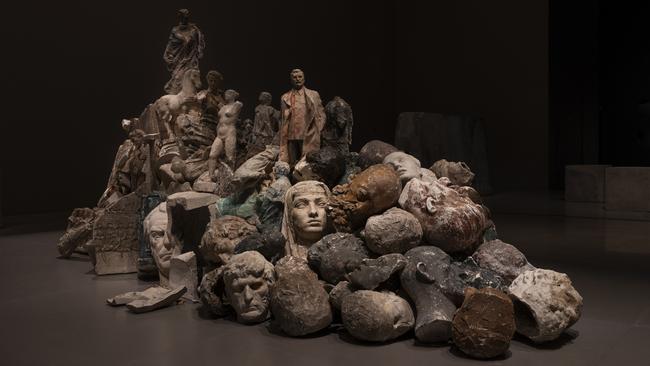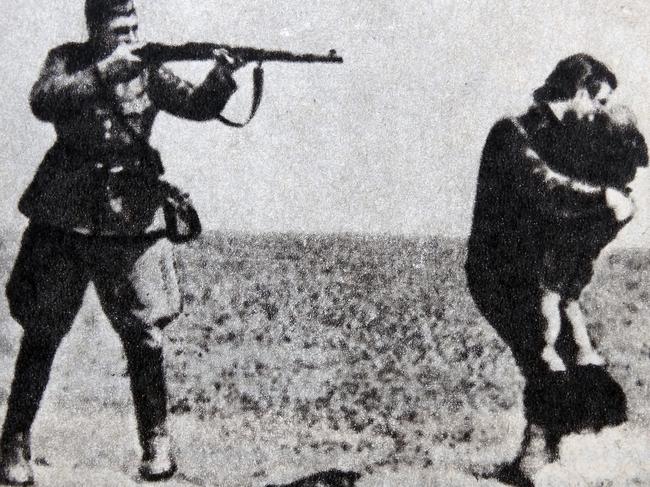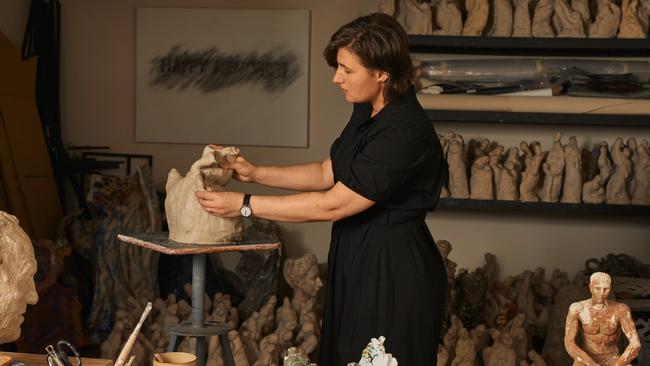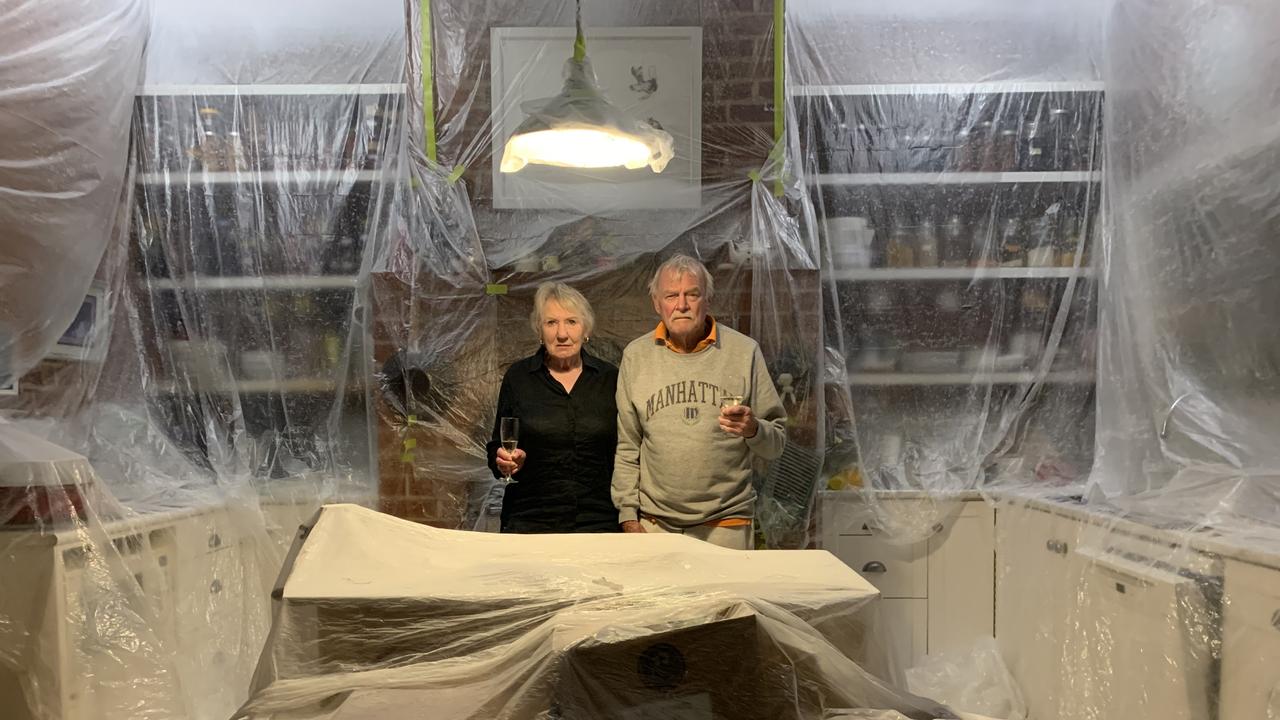Nina Sanadze, artist, 48: Q&A
She fled the Soviet Union with her family for a new life in Australia — and now a major survey of her sculptural work is on at the NGV. What drives artist Nina Sanadze?

What was your pathway to creating the sculptural work which features in a major survey at NGV Australia at the moment? I was born in Tbilisi, the capital of Georgia, in 1976. Following the collapse of the Soviet Union, a violent military coup against the Georgian president in 1991 and a civil war, my family fled – first to Moscow, and then to Melbourne in 1996. I worked as a children’s book illustrator for two decades before transitioning into fine art in my early forties, occasionally designing for theatre and stage. Since then I’ve produced a vast body of work in a short time.
How does your work reference your early life? I largely reflect on my Soviet background and 20th-century Eastern European history, including the Holocaust. This work demands both stamina and a mature perspective. It helps me navigate and comprehend personal and ancestral history while also drawing connections to current events that echo or revisit history.

A figure of Stalin forms part of your installation Apotheosis, a collection of sculptural fragments. What were you trying to say? It serves as a warning against calls for revolution and the resurgence of Marxist-communist ideas. Marxist-inspired ideologies resulted in the death of around 100 million innocent victims worldwide, including 20 million in the Soviet Union. Four members of my family, all aspiring communists, were among them. It is hard to comprehend how such noble ideas create brutal, authoritarian regimes. In these turbulent times, we must remember that societal transformation toward socialist ideals requires peaceful, gradual and democratic reforms – not violence and revolution.

The famous Ivanhorod Einsatzgruppen photo depicting a soldier aiming his rifle at a woman shielding her child inspired you to make over 300 sculptures for your work Hana and Child. Why so many? I was watching the Netflix documentary Einsatzgruppen [about the Nazi death squads that followed the Germany army] and looked up where that photo was taken. It was in German-occupied Ukraine, within 50km of where my family lived. I was shocked at the thought that the woman could have been my great-grandmother who, along with her three children, was murdered there. I printed the photograph, and kept the soldier folded away. I focused on the figure of the mother with the child. I wanted to make a sculpture that affected me the way the photograph did, but no one sculpture had the impact. I kept making them until I had enough to evoke the feeling. Looking at the work is like staring into absolute horror. If we don’t learn, don’t get reminded, or don’t feel anything, it’s extremely dangerous.
Apotheosis is made up of remnants of Soviet monument sculptor Valentin Topuridze’s works. How did you come to be in possession of these? I went back to Georgia for the first time in 2006 to make a film about my dad, a prominent musician who died when I was young. Topuridze’s family and my own were friends and neighbours going back three generations. I grew up around these sculptures – I used to climb the heads of his Lenins, and then I saw them destroyed with the fall of the Soviet Union. When I went to see the family they told me that, as a young man, my dad had modelled for the sculptor. I discovered that they had kept bits of his monuments hidden in hessian bags on the floor of a hut in the countryside. The first bag we looked inside had the cast of my father’s hand. It was extraordinary and really quite spooky. When I exhibited at the Tbilisi Triennial I asked the family if I could use these works.

What do you think about the practice of desecrating monuments? My work predates the Black Lives Matter movement, and I do not condone vandalism against monuments or offer solutions. My perspective on monuments is shaped by Soviet history, offering unique insights into the fate of fallen monuments over time. The exhibition features actual fallen monuments from both the Soviet and the Russian Imperial era. Until history is properly understood and openly discussed, rather than selfishly weaponised, the removal of monuments alone will not lead to a more hopeful world.
Originally, the concept for the sculptural work Call To Peace included 15 full figures of females in billowing dresses. The final version is very different – it features sculptures in varying forms of decay, and one in complete collapse. What happened? Through the process of sculpting the idealistic vision transformed. The Russian invasion of Ukraine in 2022 occurred while I was making this work. I made a sculpture with a face contorted in pain in the immediate aftermath of the massacre of October 7. These colourful “dreams” of peace, when confronted with reality, manifested as shattered hopes, but also as resilience.
The exhibition starts in the light but ends in a dark and devastating room. Were you concerned about ending the survey on such a sombre note? My exhibition reviews history by tracing the endings and examining the remnants of past eras while also highlighting numerous parallels with our present day. While focusing on history’s sobering images rather than joyful ones, I hope this journey prompts deep reflection and a reconsideration of our world. Imagine if art could wield such transformative power!
How have people responded to the work? While my installation draws from deeply personal historical and cultural references, I’m struck by the broad interpretations it evokes. For instance, the Holocaust installation – the darkest in the last room – references the final moments in the lives of my great-grandmother Hana and her three children. But it resonates with others for many reasons. Recently a guard, moved to tears, shared that it made him reflect on the pervasive issue of domestic violence against women in Australia. His gratitude for the work stands out as among the most meaningful feedback I’ve received so far.
Nina Sanadze runs until August 4 at The Ian Potter Centre: NGV Australia, Federation Square. Entry is free.



To join the conversation, please log in. Don't have an account? Register
Join the conversation, you are commenting as Logout